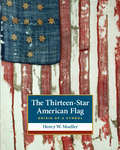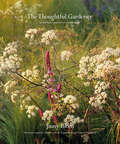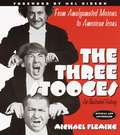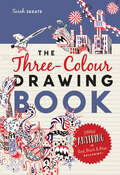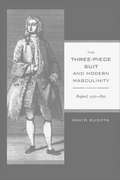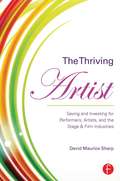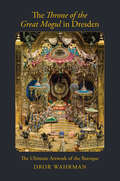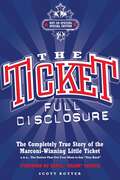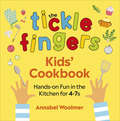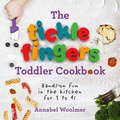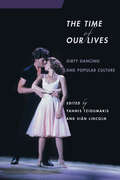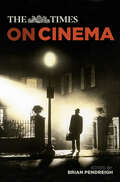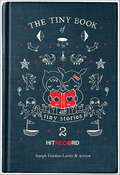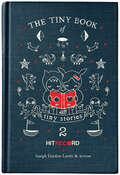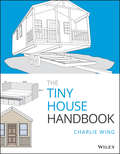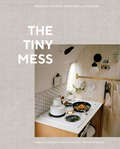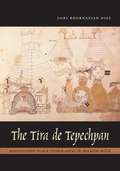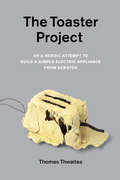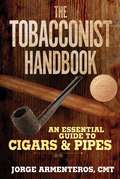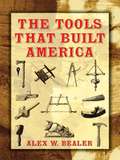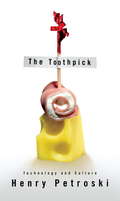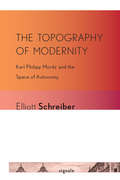- Table View
- List View
The Thirteen-Star Flag: Origin of a Symbol
by Henry W. MoellerThis book sets aside the Betsy Ross story and focuses on the sources and meanings of the symbols that make up the American flag. It explores the history of the symbolism of the flag in the early stages of its design, not who might have sewn it or who first placed the motifs on a textile.
The Thoughtful Gardener: An Intelligent Approach to Garden Design
by Jinny Blom“A detailed and richly illustrated account of how one of the UK’s leading practitioners approaches the art of garden design.” —Gardens IllustratedProlific designer Jinny Blom embraces a wide variety of styles, from large garden spaces to formal walled gardens and contemporary installations. What defines her work is her skill with plants and her ability to create a garden that responds to the history of the site and the wider landscape. The gardens Jinny creates are as different as their owners and their locations.In this book, Jinny shares her insight into the creative process she has developed while designing more than 250 gardens around the world. The Thoughtful Gardener contains modern takes on traditional forms, and is split into six sections: seeing, understanding, structuring, harmonizing, rooting, and liberating.All of Jinny’s gardens share a commitment to beautiful craftsmanship and considered planting. Structure and detail are important, and receive close attention. The styles vary considerably—logical, calm, beautiful, romantic, naturalistic, formal, sometimes spare—but the principles remain firm. Jinny designs for the long term, with consideration for the environment; these gardens are built to last.Reflecting Jinny’s highly individual character, there is plenty of wit and quirkiness alongside the expert knowledge, and it will appeal to the widest audience of garden lovers. Thoughtful and beautiful, yet practical and informative, this book marries artistry with functionality.Praise for The Thoughtful Gardener“The most romantic, creative person in garden design I know.” —Piet Oudolf“Jinny’s genius is to marry a beautiful vision to an extraordinary empathy with the landscape into which that vision will fit, resulting in a pastoral harmony second to none.” —Victoria, Lady Getty“The Thoughtful Gardener, at once a lavishly illustrated coffee-table tome and a friendly hands-on primer, offers a glimpse into some of the most magical gardens in the world.” —Architectural Digest“Landscaper Jinny Blom’s long-awaited book is so beautiful that you will not want to rush it. As the title suggests, there is more to this than lovely photography: the pages of The Thoughtful Gardener will stop you in your tracks and make you think about the potential of gardens, in a way that has never struck you before.” —Gardenista
The Three Stooges: An Illustrated History, From Amalgamated Morons to American Icons
by Michael FlemingMore people today can name the members of the Three Stooges than can name three justices of the Supreme Court. The Stooges are comedy icons whose enduring appeal and slapstick legacy have made them one of the most famous and beloved comedy troupes in the world. Michael Fleming's The Three StoogesTM is the first complete, authorized biography of the men who made pie fights part of our national cultural heritage.A juggernaut of wise guys, headlocks, and unforgettable insults, this book tells the whole history of the Stooges, starting with their origins in the golden years of vaudeville, when the boys from Brooklyn honed their craft. Moe, Curly, and Shemp Howard were born Moses, Jerome, and Samuel Horwitz--and were believed for many years to be the three least accomplished sons of their Lithuanian immigrant parents. Ultimately, of course, the Three Stooges reinvented the rules of slapstick comedy: never be caught unprepared in a pie fight, never slap one wise guy in the face if you can slap three in a row, and never underestimate the value of a good poke in the eye.Signed in 1934 by Columbia Pictures to a renewable contract that had them making at least nine short films a year, the Stooges learned firsthand about the sharks swimming through Hollywood's early waters. And after nearly a quarter century of producing the short films for which the Stooges are so well known and loved, the studio declined to renew their contract in 1954, and the pioneering pie-throwing professionals lost their jobs. Fittingly, though, Moe & Co. were destined to have the last laugh: the advent of television revived their careers after the decline of vaudeville and Hollywood shorts, and a new generation of belly laughs was born.From the Stooges' humble origins to movie stardom to comedy legends, there's something here for every level of fan--from folks who watched them on television as a kid to Stooge scholars and certified "knuckleheads." Featuring over two hundred photographs, many of them rare; interviews with Stooge friends and families; and a complete filmography with every "woob-woob" and crashed society cocktail party lovingly detailed, this book will be treasured by all Stoogedom.
The Three-Colour Drawing Book: Draw anything with red, blue and black ballpoint pens
by Sarah SkeateYou won't believe how much fun you can have with just three coloured ballpoint pens! This engaging and anarchic little book takes the art of doodling and drawing to new heights, using the most basic tools and only three colors: red, black & blue.The artistic explorer will discover how to make punky patterns, draw the most adorable animals, personalise their belongings, and summon up the cutest little characters-all with the pens that they already have at home. Combining step-by-step lessons in drawing with ingenious ways of decorating and doodling, The Three-Colour Drawing Book is a perfect for ballpoint mavericks of all ages.
The Three-Piece Suit and Modern Masculinity: England, 1550-1850
by David KuchtaIn 1666, King Charles II felt it necessary to reform Englishmens' dress by introducing a fashion that developed into the three-piece suit. We learn what inspired this royal revolution in masculine attire--and the reasons for its remarkable longevity--in David Kuchta's engaging and handsomely illustrated account.
The Thriving Artist: Saving and Investing for Performers, Artists, and the Stage & Film Industries
by David Maurice SharpThe old cliché about the "starving" artist may have a basis in reality, but it isn’t set in stone! The Thriving Artist provides valuable advice for the performing artist, whether you’re an actor, dancer, lighting guru, costumer, or stagehand, on investing, saving, and building a diversified and stable financial portfolio. Written specifically for artists who have fluctuating, uncertain, and sometimes limited streams of income, this book promotes an understanding of finances and the investment world for the artist by offering clear, basic explanations of how finances work and instruction on how to participate in them as an investor. It also provides unique strategies for integrating financial awareness and planning into your life as an artist, and how that can help to provide a better sense of financial security. With The Thriving Artist, author David Maurice Sharp guides you with unflappable good humor through the tricky financial waters that come with following your passion.
The Throne of the Great Mogul in Dresden: The Ultimate Artwork of the Baroque
by Dror WahrmanA masterful deciphering of an extraordinary art object, illuminating some of the biggest questions of the eighteenth century The Throne of the Great Mogul (1701–8) is a unique work of European decorative art: an intricate miniature of the court of the Mughal emperor Aurangzeb depicted during the emperor&’s birthday celebrations. It was created by the jeweler Johann Melchior Dinglinger in Dresden and purchased by the Saxon prince Augustus the Strong for an enormous sum. Constructed like a theatrical set made of gold, silver, thousands of gemstones, and amazing enamel work, it consists of 164 pieces that together tell a detailed story. Why did Dinglinger invest so much time and effort in making this piece? Why did Augustus, in the midst of a political and financial crisis, purchase it? And why did the jeweler secrete in it messages wholly unrelated to the prince or to the Great Mogul? In answering these questions, Dror Wahrman, while shifting scales from microhistory to global history, opens a window onto major historical themes of the period: the nature of European absolutism, the princely politics of the Holy Roman Empire, the changing meaning of art in the West, the surprising emergence of a cross-continental lexicon of rulership shared across the Eastern Hemisphere, and the enactment in jewels and gold of quirky contemporary theories about the global history of religion.
The Ticket: Full Disclosure: The Completely True Story of the Marconi-winning Little Ticket, A.k.a., the Station That Got Your Mom to Say 'Stay Hard'
by Scott BoyterBeyond the inside jokes, the fake bits and the banter, The Ticket: Full Disclosure gives you the complete low-down on how The Ticket got started. From the boys at the back of the bus to one of the most imitated sports talk radio stations on the air today, get the full story as told by the guys you tune in to hear on 1310 AM every day. On the occasion of The Ticket's 15th anniversary, Ticketheads finally have a book revealing all the history and behind-the-scenes hijinks of the Marconi-winning radio station. The ultimate bathroom book for every good, strong P1, this is the true, unvarnished Ticket story of how Mike Rhyner and the gang evolved from press-box yuk monkeys to forming the core of one of the nation's most popular radio stations.
The Tickle Fingers Kids’ Cookbook: Hands-on Fun in the Kitchen for 4-7s
by Annabel WoolmerIf you enjoyed The Tickle Fingers Toddler Cookbook, you'll love this one!Focussing on the next stage up, ages 4-7, The Tickle Fingers Children’s Cookbook maintains all of the practical, easy-to-follow, age-appropriate and allergy-friendly advice parents loved in the first book.With over 60 new recipes and activities to inspire and guide parents, grandparents and carers to help young children develop a love of food through cooking and play, it will convince even the fussiest of eaters to try new food and make meals the whole family can enjoy. Written in very simple language with clear achievable instructions, it’s an ideal first cookbook for children beginning to read and who are ready to get creative and engage with food in a relaxed and fun way.These delicious recipes include children's favourite snacks like Rough Puff Cheese Straws and Chocolate Chip Cookies, as well as more adventurous flavours such as Baba Ganoush and Orange and Almond Cake. There are also veg-filled suppers, including Super Stew and Veggie Kebab, and fun breakfasts like Tropical Smoothie, Pick 'n' Mix Granola and Tray-Bake Pancakes to inspire a life-time love of good food and cooking.
The Tickle Fingers Toddler Cookbook: Hands-on Fun in the Kitchen for 1 to 4s
by Annabel WoolmerA practical, hands-on cookery book that makes it as easy as possible for parents, grandparents and carers to have fun cooking with a toddler aged 1 to 4 years old.Everything in Tickle Fingers is completely toddler appropriate with minimal need for adult intervention – no hobs, no sharp knives, and no raw meat – and has been carefully selected to emphasise all the activities toddlers love to do: squishing, sorting, mixing and pouring. With 60 step-by-step recipes for all the family to enjoy, special sections on allergies and fussy eating, and lots of ideas on how to tackle common challenges, The Tickle Fingers Toddler Cookbook is full of simple yet delicious food that every toddler will be proud to (almost) make on their own.
The Time of Our Lives: Dirty Dancing and Popular Culture
by Yannis Tzioumakis Siân LincolnA low-budget independent film made by a now defunct video company in the late 1980s, Dirty Dancing became a sleeper hit with a huge, primarily young audience. Even twenty-five years on, the film has found millions of devoted fans around the world through TV, video, and DVD releases. In The Time of Our Lives: Dirty Dancing and Popular Culture editors Yannis Tzioumakis and Siân Lincoln bring together leading scholars of film, media, music, culture, theater, dance, and sociology to examine for the first time the global cultural phenomenon of Dirty Dancing. Tzioumakis and Lincoln begin by assessing Dirty Dancing's cultural impact in the decades since its release and introduce contributors in four sections. Essays in "Dirty Dancing in Context" look at the film from several perspectives, including its production and distribution history, its blending of genres, its treatment of race, and its place in the political and visual culture of the 1980s. In "Questions of Reception," contributors examine the many ways that the film has been received since its release, while those in "The Production of Nostalgia" focus on the film's often critiqued production of an idealized past. Finally, contributors in "Beyond the Film" examine the celebrated synergies that the film achieved in the "high concept" film environment of the 1980s, and the final two essays deal with the successful adaptation of the film for the stage. With the enormous cultural impact it has made over the years, Dirty Dancing offers many opportunities for thought-provoking analysis. Fans of the movie and students and scholars of cultural, performance, and film history will appreciate the insight in The Time of Our Lives.
The Times on Cinema
by Brian Pendreigh‘It is up to the Great Film Critic in the Sky to deal with Life of Brian.’ Penelope Mortimer LETTERS TO THE EDITOR In 1958, The Times referred to Alfred Hitchcock’s Vertigo as ‘not an important film or even major Hitchcock’. In 2012, they reported that it had been declared the best film of all time. Cinematic history is filled with hindsight; filled with tales of the ‘underdog’ being talked down only to rise triumphantly – nobody thought The Wizard of Oz or Titanic would be remotely successful. But they were. In The Times on Cinema, celebrated film author and journalist Brian Pendreigh throws open the archives on one of Britain’s favourite pastimes. From the Fatty Arbuckle scandal in the 1920s to the infamous Oscars mix up of 2017, from Harry Potter to James Bond, cinema’s most revered and sharp-tongued critics line up to review and retell some of the world’s most famous films and infamous events.
The Tiny Book of Tiny Stories, Volume 2: Volume 2 (The\tiny Book Of Tiny Stories Ser.)
by Joseph Gordon-LevittActor Joseph Gordon-Levitt (The Dark Knight Rises, Inception, Looper, 500 Days of Summer) made a big splash with The Tiny Book of Tiny Stories—so now he’s back with volume 2! One of the most ingenious and successful projects to come out of Gordon-Levitt's online creative coalition hitRECord—an international collaboration of artists and writers—The Tiny Book of Tiny Stories: Volume 2 offers more quirky, delightfully small, ingeniously illustrated haiku-like tales, proving once more that the universe isn’t made of atoms; it’s made of tiny stories. The best things do come in small packages.
The Tiny Book of Tiny Stories: Volume 2
by Joseph Gordon-LevittThe universe is not made of atoms; it's made of tiny stories.Featuring 62 contributors from the 14,946 contributions to the Tiny Stories collaboration on HITRECORD.ORG
The Tiny House Handbook
by Charlie Wing“This thought provoking book is a great resource for anyone considering joining the tiny house movement. It’s all the information you need in one book! The author has done a phenomenal job blending real world experience, data and practical knowledge on all types of tiny homes.”-Corinne Watson, Principle and Co-Founder, Tiny Homes of Maine“Charlie Wing’s very readable Tiny House Handbook leads you through the processes of designing and building a tiny home, with careful attention to all the details, including legal issues, cost estimates, material utilization and foundation options. Charlie is a master at demystifying the seemingly complex process of homebuilding. This book will help you live both comfortably and lighter on the land.“-John S. Crowley, CEO of FACET and Board member, Build It GreenPlan, design, and build a tiny house from scratch The Tiny House Handbook is a comprehensive guide to everything you need to know to construct your very own tiny house. Produced in Charlie Wing’s signature “visual handbook” style and jam-packed with full-color illustrations and diagrams, this book includes step-by-step instructions for building a tiny house as well as information on cost estimating and design requirements. Based on 2018 International Residential Code (IRC) Appendix Q, this book includes sample construction drawings and floor plans for a variety of tiny home styles, including: · Mobile (8'6”-wide trailers and RVs) · Movable (12'-wide, routine transport permit) · Site-built (up to 20’ wide) Rather than being just another inspirational collection of tiny home photographs, The Tiny House Handbook constitutes a complete and fulsome reference for anyone seeking to build their own tiny home. From seasoned construction vets to total novices, this book will walk you through the process of designing and building a tiny house from start to finish.
The Tiny Mess: Recipes and Stories from Small Kitchens
by Maddie Gordon Mary Gonzalez Trevor GordonA lushly photographed cookbook featuring more than 40 recipes from tiny kitchens, The Tiny Mess is a whimsical combination of stories, recipes, culinary adventure, and of course, petite and inspiring cooking spaces that prove constraints are nothing but an invitation for creativity.From sailboats and trailers, to treehouses, cottages, and converted railcars, The Tiny Mess is alive with stories of tiny houses, the people who live in them, and the meals they love the most. The book offers full-flavored recipes for kitchens of any size, featuring gorgeous photographs of intimate kitchens; the fresh, colorful food they produce; and the artisans, cooks, anglers, and farmers who own and work in them. A range of inventive dishes includes options for breakfast, lunch, dinner, and even cocktail hour, such as Sourdough Pancakes, Kitchen Sink Quiche, Nopal Cactus Salad, Slow-Stewed Rabbit Tacos, Blueberry and Lime Pie, and Rosemary-Honey Gin and Tonic. In addition to the recipes, the book includes narratives about the contributors, including their tips and tricks for essential equipment, pantry items, and small kitchen hacks.
The Tira de Tepechpan
by Diel Lori BoornazianCreated in Tepechpan, a relatively minor Aztec city in Central Mexico, the Tira de Tepechpan records important events in the city's history from 1298 through 1596. Most of the history is presented pictographically. A line of indigenous year signs runs the length of the Tira, with images above the line depicting events in Tepechpan and images below the line recording events at Tenochtitlan, capital of the Aztec empire and later the seat of Spanish rule. Written annotations amplify some of the images. In this volume, which includes color plates of the entire Tira, Lori Boornazian Diel investigates the motives behind the creation and modification of the Tira in the second half of the sixteenth century. She identifies the Tira's different contributors and reconciles their various histories by asking why these painters and annotators, working at different times, recorded the events that they did. Comparing the Tira to other painted histories from Central Mexico, Diel demonstrates that the main goal of the Tira was to establish the antiquity, autonomy, and prestige of Tepechpan among the Central Mexican city-states that vied for power and status in the preconquest and colonial worlds. Offering the unique point of view of a minor city with grand ambitions, this study of the Tira reveals imperial strategy from the grassroots up, showing how a subject city negotiated its position under Aztec and Spanish control.
The Toaster Project: Or A Heroic Attempt to Build a Simple Electric Appliance from Scratch
by Thomas Thwaites"Hello, my name is Thomas Thwaites, and I have made a toaster." So begins The Toaster Project, the author's nine-month-long journey from his local appliance store to remote mines in the UK to his mother's backyard, where he creates a crude foundry. Along the way, he learns that an ordinary toaster is made up of 404 separate parts, that the best way to smelt metal at home is by using a method found in a fifteenth-century treatise, and that plastic is almost impossible to make from scratch. In the end, Thwaites's homemade toaster—a haunting and strangely beautiful object—cost 250 times more than the toaster he bought at the store and involved close to two thousand miles of travel to some of Britain's remotest locations. The Toaster Project may seem foolish, even insane. Yet, Thwaites's quixotic tale, told with self-deprecating wit, helps us reflect on the costs and perils of our cheap consumer culture, and in so doing reveals much about the organization of the modern world.
The Tobacconist Handbook: An Essential Guide to Cigars & Pipes
by Jorge ArmenterosLearn the ins and outs of tobacco use, from cigars, pipes, vapes, hookahs, and more! As we live in the &“golden age of cigar making,&” there is more to know and appreciate than ever before. Great cigars and pipe tobaccos take years to grow, nurture, age, blend, and construct, yet their destiny is to return to dust; it is an extraordinary transformational and artistic journey that yields priceless moments and memories for the aficionado. But where do things begin? Where to start? From Jorge Armenteros, founder of Tobacconist University®, you will learn everything you want and need to know about cigars and pipes. From seed to cigar, Armenteros will teach not only the history of tobacco, but what the future holds. The Tobacconist Handbook exists as a resource for lovers of luxury tobacco to enhance our knowledge, appreciation, and quality of life. Included in this handbook are numerous important lessons, including:Learning the different types of tobaccoWhich cigar best suitsMaking the perfect cutSetting up a humidorAnd much more Great cigars and pipes help us ruminate, decompress, gather our thoughts and emotions, revitalize ourselves, and savor our time. Furthermore, through education you will learn that luxury tobacco products are used by choice and not out of habit. They are products created by great craftsmen and women who honor thousands of years of traditions and history. Whether you&’re a seasoned smoker or someone looking to learn more about the history and becoming a cigar aficionado, The Tobacconist Handbook is the perfect place to start.
The Tony Awards: A Celebration of Excellence in Theatre
by Eila Mell The American Theatre WingCommemorating over 75 years of Broadway greatness with never-before told stories, rare photos from the American Theatre Wings' archives, and interviews with major honorees like Lin-Manuel Miranda, Patti LuPone, and Hugh Jackman, The Tony Awards is the official, authorized guide to Broadway's biggest night.The Tony Awards: A Celebration of Excellence in Theatre pays tribute to the magic that happens when the curtain goes up and Broadway's best and brightest step onto center stage. Supported by the American Theatre Wing, the arts organization that founded the Tony Awards in 1947 and continues to produce the Tony Awards live telecast each year, author Eila Mell has interviewed a cavalcade of past and present Tony winners, including actors, producers, writers, costume designers, and many many others. Their voices fill the pages of this book with fascinating, behind-the-scenes stories about what it's like to win the theatre world's highest honor. Featuring a foreword by Audra McDonald and over 400 color and black-and-white photographs, The Tony Awards also spotlights more than 130 captivating interviews with a parade of industry insiders, including: Mel Brooks, Matthew Broderick, Carol Burnett, Kristin Chenoweth, Glenn Close, James Corden, Bryan Cranston, Neil Patrick Harris, Jennifer Holliday, Hugh Jackman, John Kander, Angela Lansbury, Judith Light, Hal Linden, Kenny Leon, Patti LuPone, Lin-Manuel Miranda, Brian Stokes Mitchell, Rita Moreno, Bernadette Peters, Chita Rivera, Martin Short, Tom Stoppard, Julie Taymor, Leslie Uggams, and Sir Andrew Lloyd Webber.
The Tools that Built America
by Alex W. BealerFascinating story of early American woodworking, told by a master craftsman, enthusiastically describes and clearly illustrates a wide array of axes, saws, planes, hammers, and other implements used by frontiersmen. Delicate tools such as calipers, bevels, and lathes employed by cabinet- and furniture-makers are portrayed as well. Over 200 drawings and photographs.
The Toothpick
by Henry PetroskiA celebration culture and technology, as seen through the history of the humble yet ubiquitous toothpick, from the best-selling author of The Pencil.From ancient Rome, where emperor Nero made his entrance into a banquet hall with a silver toothpick in his mouth, to nineteenth-century Boston, where Charles Forster, the father of the American wooden toothpick industry, ensured toothpicks appeared in every restaurant, the toothpick has been an omnipresent, yet often overlooked part of our daily lives. Here, with an engineer's eye for detail and a poet's flair for language, Henry Petroski takes us on an incredible tour of this most interesting invention. Along the way, he peers inside today's surprisingly secretive toothpick-manufacturing industry, and explores a treasure trove of the toothpick's unintended uses and perils, from sandwiches to martinis and beyond.From the Trade Paperback edition.
The Toothpick
by Henry PetroskiA celebration culture and technology, as seen through the history of the humble yet ubiquitous toothpick, from the best-selling author of The Pencil.From ancient Rome, where emperor Nero made his entrance into a banquet hall with a silver toothpick in his mouth, to nineteenth-century Boston, where Charles Forster, the father of the American wooden toothpick industry, ensured toothpicks appeared in every restaurant, the toothpick has been an omnipresent, yet often overlooked part of our daily lives. Here, with an engineer's eye for detail and a poet's flair for language, Henry Petroski takes us on an incredible tour of this most interesting invention. Along the way, he peers inside today's surprisingly secretive toothpick-manufacturing industry, and explores a treasure trove of the toothpick's unintended uses and perils, from sandwiches to martinis and beyond.From the Trade Paperback edition.
The Toothpick: Technology and Culture
by Henry PetroskiLike The Pencil, Henry Petroski's The Toothpick is a celebration of a humble yet elegant device. As old as mankind and as universal as eating, this useful and ubiquitous tool finally gets its due in this wide-ranging and compulsively readable book. Here is the unexpected story of the simplest of implements--whether made of grass, gold, quill, or wood--a story of engineering and design, of culture and class, and a lesson in how to discover the extraordinary in the ordinary. Petroski takes us back to ancient Rome, where the emperor Nero makes his entrance into a banquet hall with a silver toothpick in his mouth; and to a more recent time in Spain, where a young señorita uses the delicately pointed instrument to protect her virtue from someone trying to steal a kiss. He introduces us to Charles Forster, a nineteenth-century Bostonian and father of the American toothpick industry, who hires Harvard students to demand toothpicks in area restaurants--thereby making their availability in eating establishments as expected as condiments. And Petroski takes us inside the surprisingly secretive toothpick-manufacturing industry, in which one small town's factories can turn out 200 million wooden toothpicks a day using methods that, except for computer controls, haven't changed much in almost 150 years. He also explores a treasure trove of the toothpick's unintended uses and perils, from sandwiches to martinis and beyond. With an engineer's eye for detail and a poet's flair for language, Petroski has earned his reputation as a writer who explains our world--from the tallest buildings to the lowliest toothpick--to us.
The Topography Of Modernity
by Elliott SchreiberKarl Philipp Moritz (d. 1793) was one of the most innovative writers of the late Enlightenment in Germany. A novelist, travel writer, editor, and teacher he is probably best known today for his autobiographical novel Anton Reiser (1785-90) and for his treatises on aesthetics, foremost among them Über die bildende Nachahmung des Schönen (On the Formative Imitation of the Beautiful), published in 1788. In this treatise, Moritz develops the concept of aesthetic autonomy, which became widely known after Goethe included a lengthy excerpt of it in his own Italian Journey (1816-17). It was one of the foundational texts of Weimar classicism, and it became pivotal for the development of early Romanticism. In The Topography of Modernity, Elliott Schreiber gives Moritz the credit he deserves as an important thinker beyond his contributions to aesthetic theory. Indeed, he sees Moritz as an incisive early observer and theorist of modernity. Considering a wide range of Moritz's work including his novels, his writings on mythology, prosody, and pedagogy, and his political philosophy and psychology, Schreiber shows how Moritz's thinking developed in response to the intellectual climate of the Enlightenment and paved the way for later social theorists to conceive of modern society as differentiated into multiple, competing value spheres.
